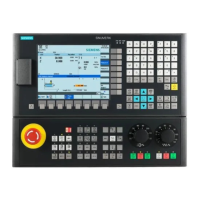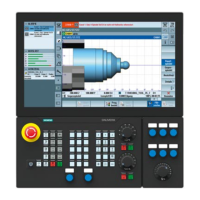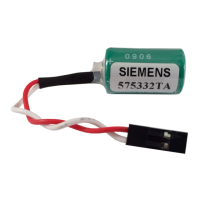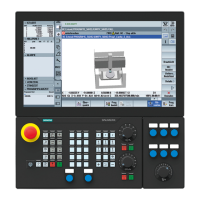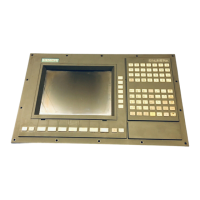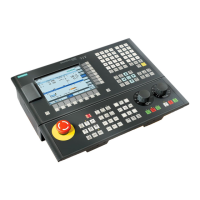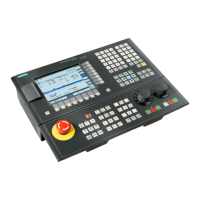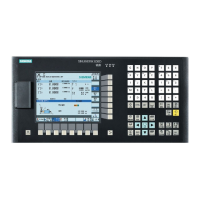Programming Motion Commands
4.7 Circular interpolation with radius and end point (G2/G3, CR)
Fundamentals
4-24 Programming Manual, 10.2004 Edition, 6FC5 298-7AB00-0BP1
4.7 Circular interpolation with radius and end point (G2/G3, CR)
The circular movement is described by the:
• Circle radius CR= and
• the end point in Cartesian coordinates X, Y, Z.
In addition to the circle radius, you must also specify the leading sign +/– to indicate whether
the traversing angle is to be greater than or less than 180°. A positive leading sign can be
omitted.
Note
There is no practical limitation on the maximum size of the programmable radius.
Programming
G2/G3 X… Y… Z… CR=
Or
G2/G3 I… J… K… CR=
Parameters
G2 Circular interpolation clockwise
G3 Circular interpolation counterclockwise
X Y Z End point in Cartesian coordinates. These data depend on
the motion commands G90/G91 or ...=AC(...)/...=IC(..)
I J K Circle center point in Cartesian coordinates (in X, Y, Z
direction)
The identifiers have the following meanings:
I: Coordinate of the circle center point in the X
direction
J: Coordinate of the circle center point in the Y
direction
K: Coordinate of the circle center point in the Z
direction
CR= Circle radius
Here:
CR=+…: Angle less than or equal to 180°
CR=–…: Angle more than 180°
Note
You don't need to specify the center point with this procedure. Full circles (traversing angle
360°) cannot be programmed with CR=, but must be programmed using the circle end point
and interpolation parameters.

